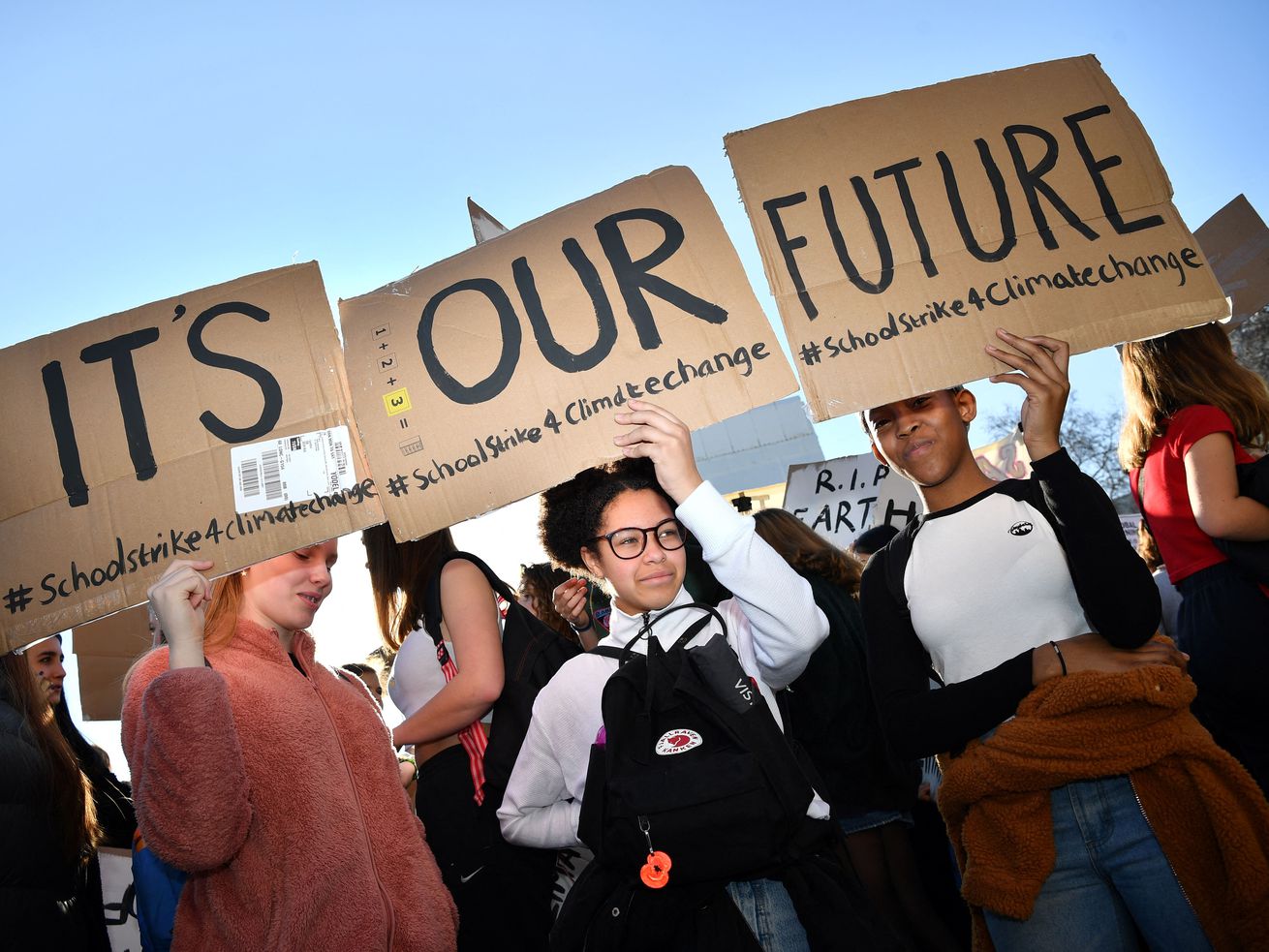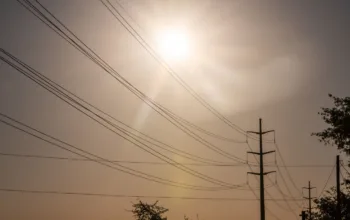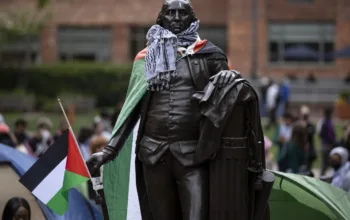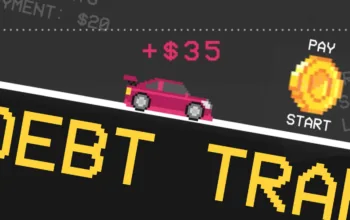The latest UN report looks at bigger solutions than choosing solar energy and a plant-based diet.
How much do your actions as an individual matter when it comes to climate? The latest report from the Intergovernmental Panel on Climate Change from the United Nations is the first time the group has tackled this thorny question head-on. It turns out some actions really do matter more than others, and the report makes clear that the wealthiest, who are also the world’s biggest polluters, are obliged to move first, fastest, and furthest in slashing carbon pollution.
In as little as a year, the IPCC says, rapid change in societal norms and infrastructure support can slash global “end-use emissions” — meaning pollution from satisfying consumer use of buildings, transit, and food — by 5 percent.
Still, it isn’t always that simple. When I interviewed Felix Creutzig — the lead coordinating author of a chapter in the report that tackled the question of individual and societal change — I fell into a common trap by asking about lifestyle changes.
“We talk about behavior and lifestyles,” but it wasn’t the main focus, Creutzig, one of hundreds of scientists who worked on the report, said over Skype from Berlin. “And that’s mostly because the space where we can make choices is limited and restricted by infrastructure and by political regulation. Yes, every choice is important, but it really depends on what kind of structure we are living in.”
While there are clearly some individual choices that are more impactful than others — one is focusing on transportation, like taking fewer long-haul flights and living car-free — he said the report also bluntly characterizes individual behavioral changes as “insufficient … unless embedded in structural and cultural change.”
In other words, a single person taking well-meaning steps to lessen their footprint doesn’t change the fact that billions of people are living off fossil fuels. It’s the default, and sometimes, it’s the only option. But there are things individuals can do at work and in their communities that will do more to push structural change.
To limit warming to 1.5 degrees Celsius, the world needs to aggressively cut emissions as soon as possible and slash them by half by 2030. We’re nowhere near these numbers. Nor will the world get there by only following the messaging, pushed by the oil industry, of taking marginal steps to tackle our own carbon footprints without thinking more structurally about the reasons so many are still tethered to fossil fuels.
So the bottom line of the IPCC’s first look at individual action is this: By reexamining the way we live, move around, and eat, the world has the potential to slash up to 70 percent of end-use emissions by 2050. Change is even possible in the very short term. And while hard data and peer-reviewed science show individual actions do matter, ultimately, the world has to think beyond the individual carbon footprint in addressing the climate crisis, including thinking about how individuals can bring about structural change.
What the global rich do really matters
Just as richer countries have accounted for the most cumulative pollution since the 1850s (the United States being No. 1), there’s robust evidence that richer individuals also contribute a disproportionate amount to greenhouse gas emissions. According to the IPCC, the bottom 50 percent of households account for less than 15 percent of global pollution, while the top 10 percent of households in the world are responsible for up to 45 percent of global greenhouse pollution.
The top 10 percent is a broad category that includes more than the jet-fliers and yacht-owners. According to the IPCC, the top 10 percent includes households that spend more than $23 (in US dollars, compared using a metric called purchasing power parity) per person a day. The bottom 50 percent spend less than $3 per person per day.
If you fall in that top 10 percent category — and there is a good chance that if you live in the United States, you do — then one action you can take is to limit consumption, especially of travel, food, and energy. “To those of us who are in that privileged category, we have a huge responsibility to respond and to do all that we can to immediately solve this problem,” Creutzig said.
Generally, the biggest contributor to this pollution is the way the wealthiest get around. This isn’t just for those flying private jets or owning a yacht. The top 10 percent of households have plenty of other potential for slashing emissions.
Taking one fewer long-haul flight per year, for instance, can have the biggest effect, and so does ditching one’s car. For many people, living car-free is impossible, but reducing car usage by telecommuting more, taking public transit, and walking and cycling can help, along with getting an electric vehicle. There are also other reasonable options, including using air conditioning less, shifting to a mostly plant-based diet, and reducing food waste.
To be clear, we’re not going to hit climate pollution benchmarks on the timeline that’s needed by hoping people take one fewer flight a year. It’s important to think much bigger than one’s own life and habits to usher in the kind of social and behavioral change that’s necessary. And that’s where the IPCC takes a closer look at the other policies and actions that can make the biggest difference.
There is a chance to make a difference in schools, cities, counties, and professions
Discussion around how to address climate change tends to exist in polar opposites. You can find guides across the internet on how to reduce your carbon footprint and then find thousands of articles, many of them at Vox, on the political change needed to usher in a clean energy transition.
But it turns out there isn’t such a hard-line distinction on where individual action ends, because even individual actions can have network effects. In between, there are schools, counties, cities, professions, and peer groups that can push for climate action. The IPCC calls these “middle actors.”
Professionals have a lot of potential to do more. Some examples include building managers, landlords, technicians, car dealers, and city planners, each of whom can bring about change in a number of different directions (as can journalists). “In these kind of professions people can make a difference by organizing their job differently,” Creutzig said.
For example, many of these professions have formal standards or informal networks where they can form new norms that prioritize climate change. Architects’ choices can mean the difference between new buildings reliant on heat pumps or gas-powered appliances. Landlords can help ensure that rentals are energy-efficient, keep appliances well maintained, and adopt clean energy use, all while decreasing energy costs for the building. City planners can make roads safer to bike and walk, and discourage road traffic, all through smart design. Investors can influence clean energy and fossil fuel investments in the private sector.
A well-placed nudge can make a big difference
The pandemic has supported that rapid collective change in behavior is possible. Global travel fell dramatically in 2020, even for the most frequent fliers who take business trips throughout the year, and workday commutes shortened or disappeared for millions.
The IPCC isn’t arguing that global governments should reengineer the dramatic shutdowns of the early pandemic that brought travel to a standstill. But the science body noted that the pandemic is proof that broad, structural behavioral change can and does happen.
Policy plays a big role in nudging people into making more climate-friendly decisions, basically making it as easy as possible to lessen one’s footprint. The IPCC authors write that “judicious labelling, framing, and communication of social norms can also increase the effect of mandates, subsidies, or taxes.” Interventions that change the “choice architecture” so people have an easier time taking the cleaner option include: default enrollment in green programs, increasing taxes on carbon-intensive products, and substantially tightening regulations and standards.
Let’s take food as an example. In a school cafeteria or restaurant, the way a menu or choices are presented can make a difference in how people decide what to eat. Because of a psychological effect called priming, whatever you see first can guide your decision. So a beef steak getting prominent placement on a menu tends to prime people to choosing the meat-heavy option over the vegan dish. The same rule can work for supermarkets, nudging people to healthier choices and alternative meat products with prominent placement in the store.
Another example of a smart nudge could be using feedback to help reduce energy consumption. A meta-analysis of 122 studies published last year in Nature Energy compared the effect different interventions had on household energy use. Offering households a financial reward for energy efficiency had the biggest effect; after that, providing consumers with more information on their energy usage, and a benchmark to compare it to, also had a measurable medium-sized effect over the short-term period that most of these studies covered. These nudges could account for a little over 6 percent of annual global residential emissions, a relatively small effect, but one that adds up year after year.
The world won’t hit its climate goals without policymakers speeding up the transition to clean energy, investing in large-scale projects, and ending fossil fuel subsidies. But the same holds true for behavioral change.
What you do matters when it’s about more than you
The number one takeaway from the IPCC is that to take action on climate change, you have to also direct your attention to changing the structures in which you operate.
IPCC vice chair Ko Barrett, a top scientist at NOAA, explained the importance of tackling the question of what individuals can do in inspiring greater change. “I love the storyline about individuals, not because I’m being Pollyanna-ish that that can solve the problem.” But she thinks that, in looking at what people can do in their own lives and, more importantly, their communities, “we actually magnify the value of our individual actions to a scale that matters in cities and towns. That’s the scale that we can really engage because people can see the broader impact of collective action.”
Take one example of how individual action can have broader network effects: The IPCC report looks at what happens when a neighbor installs a rooftop solar panel. Sure, it reduces that household’s footprint, but it also makes it more likely for others in the neighborhood to adopt solar energy too, because of how it nudges social norms and expectations. The house with solar panels also serves as something like a role model for a new way we could all live.
Now think bigger than a solar panel: A person connects with others in their community to pass an ordinance that updates energy efficiency measures for the town’s buildings. That’s organized collective action. “Collective action as part of social or lifestyle movements underpins system change,” the report says. The scientists nod to the climate strikes that have given voice to youth in more than 180 countries, which help build social trust and citizen-led networks.
These social movements have exploded as the first generation growing up with the harsher realities of climate change becomes a political force globally. Barrett recognizes that “more and more, the readers of the science reports are not just policymakers at the national level. There are very many well-informed citizens on climate science now. Bringing more information that is immediately useful to them is really powerful.”
Author: Rebecca Leber
Read More



